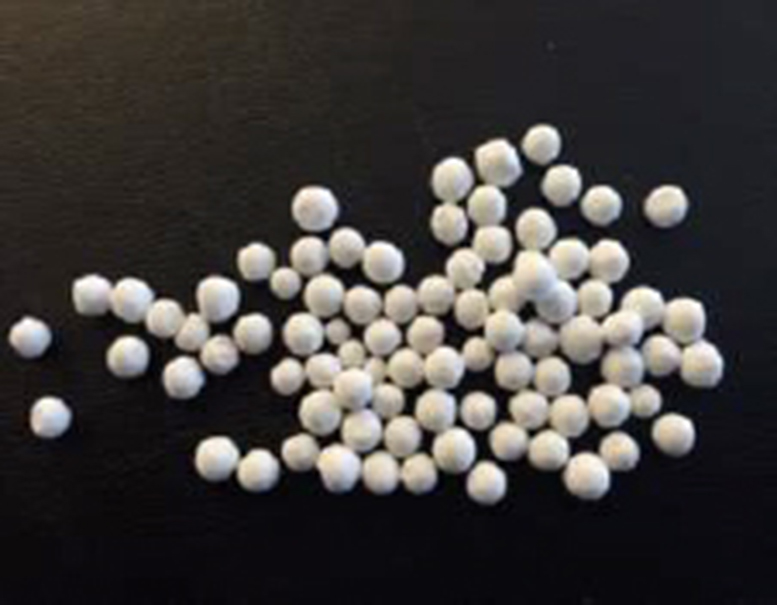Potassium sulphate
mineral fertiliser

Potassium sulphate is the ideal product for mixing with other fertilizers. Combined with one or two other components, it has a wide range of applications, giving the grower a fertilizer tailored to the needs of the crop. The granular shape makes it easy to handle and mix the product with other granular products without dust problems.
The granules are produced via a special four-step process. After compressing the SOP from powder to solid, these are crushed and then granulated. The granules are then sieved to remove large and small particles and transported to a separate unit for dusting. Compressed air is then shot on the granules to remove the dust, and finally the granules are coated with a particularly thin layer to keep them dust-free.
Mineral reserves in the soil always go down during cultivation. But not always, for example, most of the potassium in a harvested grain crop will be present in the straw. So when it is commercially reasonable to sell straw, it is important to increase potassium inputs to compensate. The potassium in Potassium Sulfate complements routine fertilizer applications.

Potassium sulphate offers a number of benefits for direct dispersion:
Safety and flexibility - The properties of Potassium Sulfate allow for both early and late application, without the risk of leaching or salt damage to the soil.
A dust-free product - The special process used to make the granules ensures that the fertilizer is virtually dust-free.
High percent potassium (K) fertilizer on sulfate base is suitable for all chloride and salt sensitive crops. Due to high sulfur content, potassium sulphate is particularly suitable for plants with high sulfur (S) requirements, such as rapeseed, radish, cabbage and onions.
Potassium Sulfate K2SO4 (Potassium Sulfate)
Potassium (K) fertilizer based on potassium sulphate is suitable for potassium (K) needy and chlorine sensitive plants such as potatoes and many other crops.
Suitable as basic fertilizer and top dressing.
Good spreading quality
Crop
Method
Cereals and oilseeds
Apply at the beginning of spring, to oilseed rape to optimize the synthesis of yield, protein and oil. For wheat to increase yield and to ensure grain protein quality. On painted barley for yield and quality.
Peas
Apply directly in the seedbed or immediately after germination. This is a zero-N fertilizer that brings readily available potassium and sulfur to the crop, and can therefore be taken up by the plant at an early stage to feed the nitrogen fixation, which occurs in the roots and for protein synthesis in the plant.
Meadow
The use of livestock manure is not a safe source of available potassium or sulphate, and is best regarded as maintaining soil reserves. Potassium sulphate should be applied in accordance with nitrogen requirements as needed to achieve optimal grass growth throughout the season in proper K: N: S ratio.

Analysis
Potassium (K2O)
Sulfur (S)
Chlorides (Cl)
Moisture
hardness
Particles above 2 mm
Particles above 5 mm
min 50%
min 17%
max 2.5%
Max 1.0%
2.5 kg / grain
75-95%
max. 5%

Content
The pure mineral form of potassium sulphate, arcanite, is relatively rare. Potassium sulphate is therefore usually separated from a number of natural minerals:
Kainite, MgSO4 · KCl · H2O
Picromerite, K2SO4MGSO46H2O
Leonite, K2SO4MGSO44H2O
Langbeinite, K2Mg2 (SO4) 3
Aftalitt K3Na (SO4) 2
Polyhalitt, K2SO4MGSO42CaSO42H2O

Recommendation
Refer to soil and leaf analysis, as well as consult your advisor, plant nutritional needs and crop level.
Potassium sulphate can be applied before growth increases in the spring. The goal is often to adapt the sulfur requirements to the potassium needs of the crop.
